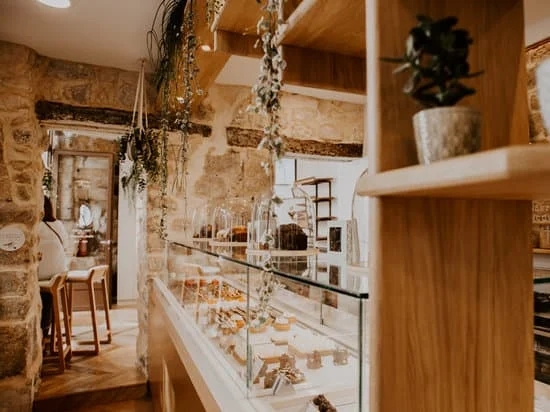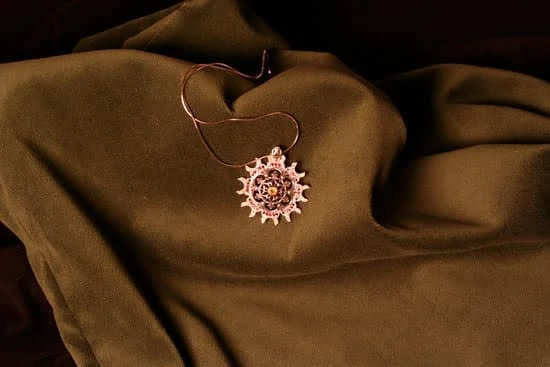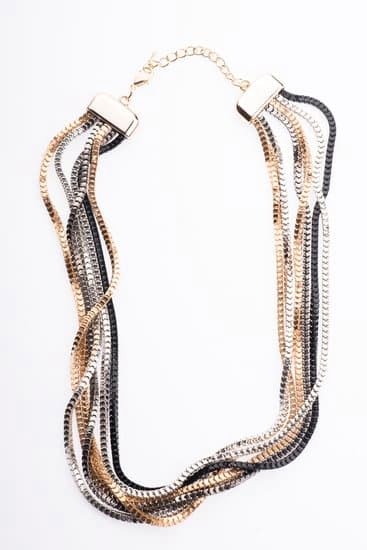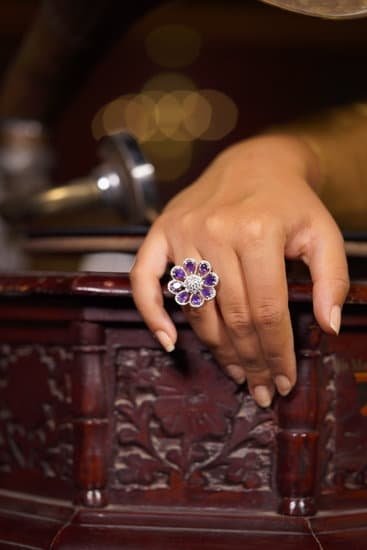Are you interested in learning how to make polymer clay beads for jewelry? Polymer clay is a versatile and affordable material that can be used to create stunning handmade beads for your jewelry projects. In this article, we will provide you with a step-by-step guide on how to make your own polymer clay beads, from conditioning and shaping the clay to baking and adding finishing touches.
Polymer clay is a type of modeling clay that is made from polyvinyl chloride (PVC), plasticizers, and colorants. It is popular among crafters and jewelry makers because it is easy to work with, comes in a wide range of colors, and can be hardened by baking it in an oven. This makes it an ideal material for creating unique and personalized beads for necklaces, bracelets, earrings, and more.
Whether you are new to working with polymer clay or are looking for new techniques to enhance your bead-making skills, this article will provide you with all the information you need to get started. We will cover everything from the materials needed and the preparation process to shaping and designing the beads, as well as baking, sanding, polishing, and adding finishing touches.
Get ready to unleash your creativity and let’s dive into the world of polymer clay bead-making.
Materials Needed
Polymer clay beads are a popular choice for crafting homemade jewelry. In order to make your own polymer clay beads for jewelry, you will need a variety of supplies and tools to ensure that your creations turn out beautifully. Here is a detailed list of all the materials needed for making polymer clay beads:
1. Polymer Clay: This is, of course, the most essential material for making polymer clay beads. You can find polymer clay in a wide range of colors at any craft store. Make sure to choose high-quality polymer clay that is easy to work with and produces durable results.
2. Work Surface: To prevent the clay from sticking to your table or countertop, it is important to have a smooth work surface. A piece of glass or ceramic tile works well, but you can also invest in a dedicated polymer clay work mat.
3. Rolling Pin: You will need a rolling pin or acrylic rod to roll out the polymer clay to an even thickness before shaping and cutting it into beads.
4. Cutting Tools: Sharp blades or craft knives are necessary for cutting the rolled-out clay into bead shapes. Additionally, small cookie cutters or shape cutters can be helpful for creating uniform bead shapes.
5. Bead Piercing Tool: This tool is used to create holes in the beads before baking so that they can be easily strung into a necklace, bracelet, or earrings once they are hardened.
6. Baking Tray: Since polymer clay needs to be cured in an oven at a specific temperature and time, you will need a baking tray lined with parchment paper or aluminum foil to place your beads on during the baking process.
Overall, by following these guidelines and using high-quality materials and tools, you can create stunning polymer clay beads for beautiful pieces of handmade jewelry.
Preparing the Clay
When it comes to making polymer clay beads for jewelry, the first step is to properly prepare the clay. This involves conditioning and preparing the polymer clay in order to make it pliable and ready for shaping into beads. Conditioning the clay helps to remove any air bubbles and makes it easier to work with, while preparing the clay ensures that it is clean and free from any debris.
Conditioning the Clay
To begin, you will need to condition the polymer clay by kneading and warming it with your hands. This process helps to soften the clay and make it more malleable. Start by breaking off a small piece of clay and kneading it between your fingers, pressing down firmly on the clay to warm it up. Continue this process until the clay becomes soft and easy to shape.
Preparing the Clay
Once the clay is conditioned, it’s important to prepare it for bead-making by ensuring that it is clean and free from any dirt or debris. You can do this by rolling the clay into a ball and then flattening it out with your hands.
If you notice any dust or particles on the surface of the clay, gently remove them using a clean cloth or tissue. It’s also a good idea to work on a clean surface or use a clean sheet of parchment paper to prevent any dirt or lint from sticking to the clay.
By following these steps for conditioning and preparing the polymer clay, you can ensure that your beads are of high quality and free from any imperfections. With properly conditioned and prepared clay, you can move on to shaping and designing your beads before baking them to create stunning jewelry pieces.
Tips for Success
- Work in small batches: Conditioning large amounts of polymer clay at once can be tiring and time-consuming. Instead, work in smaller batches to make the process more manageable.
- Use hand lotion: If you find that the clay is too hard or crumbly, try adding a small amount of hand lotion or baby oil while kneading it. This can help soften the clay and make it easier to work with.
- Avoid excessive heat: While warming up polymer clay is necessary for conditioning, avoid exposing it to excessive heat as this can cause premature hardening or distortion of shapes.
Shaping and Designing
Polymer clay is a versatile and easy-to-use material for creating unique and beautiful beads for jewelry making. Whether you’re a beginner or an experienced crafter, learning how to make polymer clay beads for jewelry can open up a world of creative possibilities. In this section, we will explore the various techniques for shaping the clay into different bead shapes and adding designs and patterns.
To create polymer clay beads for jewelry, you will need the following materials and tools:
- Polymer clay in various colors
- Rolling pin or acrylic roller
- Clay cutters or sharp blade
- Needle tool or toothpicks for adding details
- Work surface such as a ceramic tile or glass sheet
Once you have gathered your supplies, it’s time to start shaping and designing your polymer clay beads. One popular method is the “roll and slice” technique, where you roll out the clay into a thin sheet and then use clay cutters or a sharp blade to cut out shapes like circles, ovals, or squares. You can also experiment with hand-shaping the clay to create organic, irregular shapes that add an artistic touch to your jewelry pieces.
Adding designs and patterns to your polymer clay beads is where you can truly let your creativity shine. You can impress textures onto the surface of the clay using items like lace, buttons, or textured sheets. Additionally, you can create intricate patterns using techniques such as marbling different colors of clay together or layering thin slices of patterned cane onto the base bead shape.
With these shaping and designing techniques in mind, you can begin creating your own stunning polymer clay beads for jewelry. Experiment with different shapes, sizes, colors, and designs to bring your artistic vision to life.
Baking Process
After shaping and designing your polymer clay beads, the next important step is to bake them to harden and cure the clay. This process is crucial in turning the pliable and soft clay into a durable and long-lasting material that can be used for making jewelry. The baking process also helps to set any designs or patterns on the beads, ensuring that they will not smudge or fade over time.
To begin the baking process, preheat your oven according to the instructions provided on your polymer clay packaging. It is important to use an oven thermometer to ensure that the temperature is accurate, as an incorrect temperature can result in underbaked or burnt beads.
Once your oven has reached the correct temperature, carefully place your polymer clay beads on a baking sheet lined with parchment paper or a silicone baking mat. Make sure to leave enough space between each bead to prevent them from touching during baking.
Bake the clay beads according to the recommended time provided by the manufacturer. Typically, polymer clay beads should be baked for around 15-30 minutes at a temperature of 275°F (135°C). Keep a close eye on your beads while they are baking to prevent them from overheating or burning. After baking, allow the beads to cool completely before handling them. This cooling process is essential for allowing the clay to fully harden and cure.
By following these instructions for the baking process of polymer clay beads, you can ensure that your handmade jewelry pieces will be durable and able to withstand everyday wear. Remember to always refer to the specific instructions provided by the manufacturer of your polymer clay for best results when baking your creations.
Sanding and Polishing
Once your polymer clay beads have been baked and cooled, it’s time to give them a professional finish by sanding and polishing them. This step is essential for achieving a smooth surface and bringing out the vibrant colors of the clay. Here are some tips on how to sand and polish your beads for a beautiful, glossy finish:
1. Start with fine-grit sandpaper: Use fine-grit sandpaper, such as 400 or 600 grit, to gently sand the surface of your beads. Work in small, circular motions to even out any rough spots or imperfections on the clay. Be careful not to apply too much pressure, as you don’t want to deform the shape of the beads.
2. Gradually move to a higher grit: After you’ve sanded all the beads with the fine-grit sandpaper, gradually move up to a higher grit, such as 800 or 1000 grit, for a smoother finish. Continue sanding in gentle, circular motions until you’re satisfied with the texture of the beads.
3. Apply a polishing compound: Once you’ve achieved a smooth surface with the sandpaper, it’s time to polish the beads using a specialized polishing compound. Apply a small amount of the compound to a soft cloth or sponge and gently buff each bead in circular motions. This will bring out a beautiful shine and enhance the colors of your polymer clay beads.
By following these tips for sanding and polishing your polymer clay beads, you can achieve a professional-looking finish that will make your jewelry pieces stand out. Experiment with different grits of sandpaper and polishing compounds to find the best combination for achieving the desired level of smoothness and shine on your beads.
Remember that this process may take some practice to master, so don’t be discouraged if your first attempts don’t turn out perfectly – each piece is an opportunity to learn and improve your skills in creating stunning polymer clay jewelry.
Adding Finishing Touches
When it comes to making polymer clay beads for jewelry, adding finishing touches can take your creations to the next level. There are various ways to embellish or coat your clay beads to make them unique and eye-catching. Whether you prefer a subtle touch of sparkle or a bold statement, here are some suggestions for enhancing your polymer clay beads.
Embellishments
One way to add interest to your polymer clay beads is by incorporating embellishments such as rhinestones, pearls, or small metal charms. Before baking your beads, gently press these embellishments into the surface of the clay using a tool or your fingers. This will ensure that they become embedded in the bead and will not fall off once baked. You can also create texture on the surface of the bead by using molds, stamps, or carving tools.
Coatings
To give your polymer clay beads a professional-looking finish, consider applying a coating or finish after they have been baked and cooled. One popular option is using a clear varnish or glaze specifically designed for use on polymer clay. This will not only protect the surface of the bead but also give it a glossy appearance. Another option is using metallic powders or mica powders to add shimmer and depth to your beads.
Mixed Media Techniques
For those who like to experiment with mixed media techniques, consider incorporating other materials such as wire wrapping, textile fibers, or even resin into your polymer clay jewelry pieces. By combining different materials, you can create truly one-of-a-kind pieces that stand out from traditional jewelry designs.
As you explore how to make polymer clay beads for jewelry, don’t be afraid to get creative with adding finishing touches to your creations. Experiment with different embellishments and coatings to find a style that reflects your unique vision and personality. With some practice and experimentation, you’ll be able to produce stunning polymer clay jewelry that is sure to impress.
Assembling the Jewelry
Once you have successfully created your polymer clay beads, it’s time to assemble them into beautiful jewelry pieces. There are countless ideas and techniques for creating unique and stunning jewelry using your handmade beads. Whether you prefer simple and elegant designs or bold and colorful creations, the possibilities are endless.
One popular way to showcase your polymer clay beads is by stringing them onto a necklace or bracelet. You can use various materials such as beading wire, leather cord, or stretchy elastic to create different styles of necklaces and bracelets. Experiment with different bead sizes, shapes, and colors to create a harmonious or contrasting look that suits your personal style.
Another creative way to use your polymer clay beads is by incorporating them into earrings. From dainty stud earrings to statement-making dangly ones, there are plenty of earring designs that can feature your handmade beads. Consider mixing and matching different bead shapes and colors to add a playful touch to your earrings.
If you’re feeling more adventurous, you can even explore techniques such as wire-wrapping or metalworking to create more intricate jewelry pieces using your polymer clay beads. By combining your handmade beads with other materials like metal charms, crystals, or gemstone beads, you can take your jewelry-making skills to the next level and create truly one-of-a-kind pieces.
Overall, assembling jewelry using polymer clay beads allows for endless creativity and personal expression. The key is to experiment with different ideas and techniques until you find the perfect combination that brings out the beauty of your handmade beads. Whether you’re making jewelry for yourself or as gifts for others, the process of creating unique accessories from start to finish is incredibly rewarding.
Conclusion
In conclusion, making polymer clay beads for jewelry is a fun and creative process that allows you to customize your own unique pieces. Polymer clay is a versatile and durable material that can be molded into various shapes and designs, making it perfect for crafting beautiful beads for necklaces, bracelets, and earrings. By following the step-by-step guide provided in this article, you can learn how to make polymer clay beads for jewelry and unleash your creativity.
Once you have gathered all the necessary materials and tools, conditioning and preparing the clay is the first step in creating your beads. From there, you can explore different shaping and designing techniques to achieve the desired look for your beads.
After baking the clay to harden it, sanding and polishing will give your beads a smooth finish. Adding finishing touches such as embellishments or coatings will further enhance the appearance of your beads before assembling them into stunning jewelry pieces.
Whether you are a beginner or experienced crafter, diving into the world of polymer clay bead-making opens up endless possibilities for creating personalized accessories. The satisfaction of wearing jewelry made from beads that you have crafted yourself is truly unmatched. So why not start your own polymer clay bead-making journey today? With practice and patience, you will soon be on your way to creating beautiful handmade jewelry that reflects your unique style and personality.
Frequently Asked Questions
How Do You Make Polymer Clay Beads?
To make polymer clay beads, start by choosing the colors you want to use and then conditioning the clay to make it pliable. Shape the clay into beads using your hands or molds, then bake them according to the instructions on the clay packaging.
What Is the Best Polymer Clay for Beads?
The best polymer clay for making beads depends on personal preference and the specific project. Some popular brands for bead-making include Fimo, Sculpey, and Kato Polyclay. Each brand has its own unique qualities and characteristics that may suit different needs.
How Do You Seal Polymer Clay Beads?
Sealing polymer clay beads can be done using several methods. One common way is to use a clear varnish or glaze specifically designed for polymer clay.
After baking and letting the beads cool, apply the sealant with a brush, let it dry, and then repeat as needed for a smooth, glossy finish that also protects the beads from wear and tear.

Welcome to my jewelry blog! My name is Sarah and I am the owner of this blog.
I love making jewelry and sharing my creations with others.
So whether you’re someone who loves wearing jewelry yourself or simply enjoys learning about it, be sure to check out my blog for insightful posts on everything related to this exciting topic!





